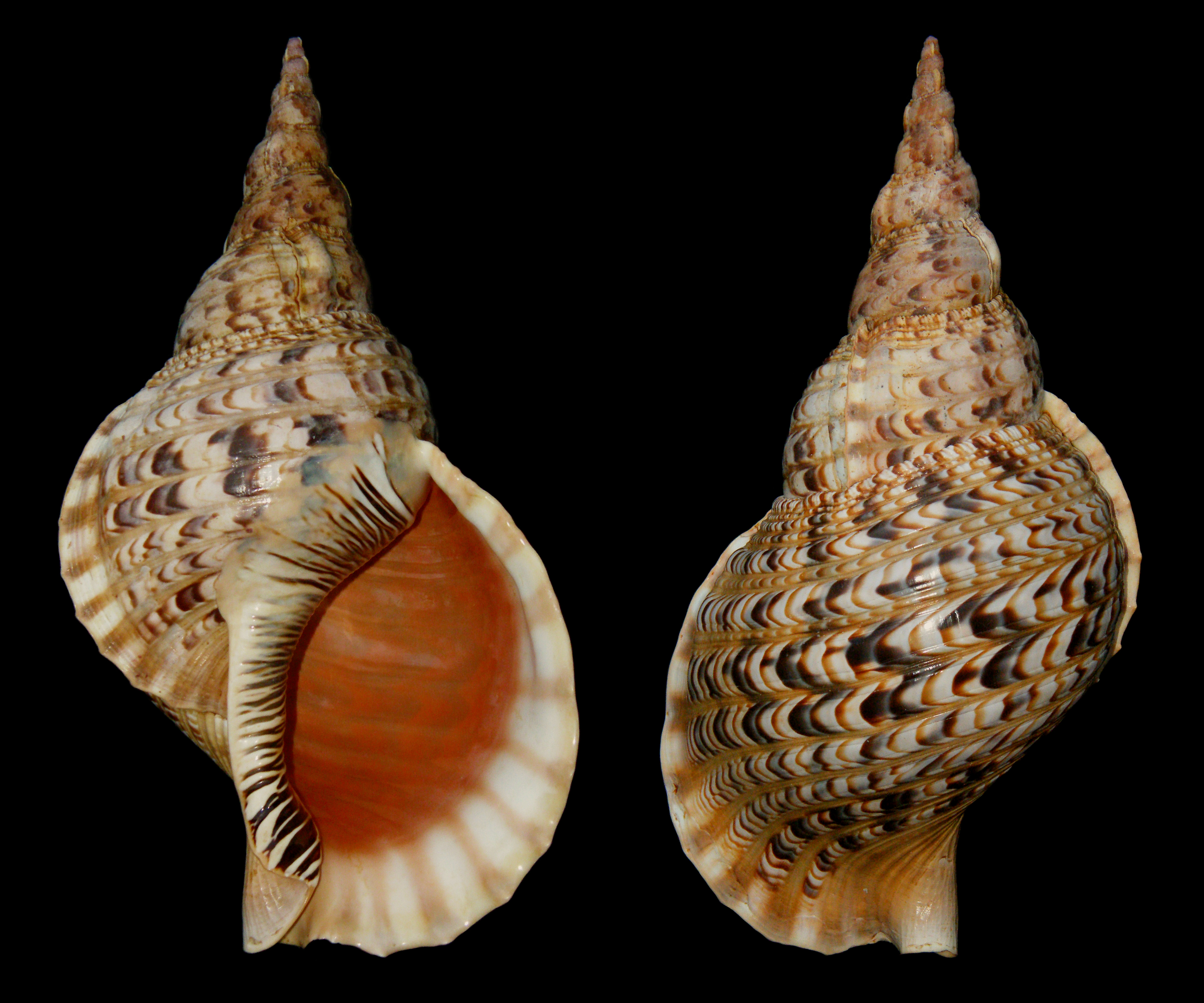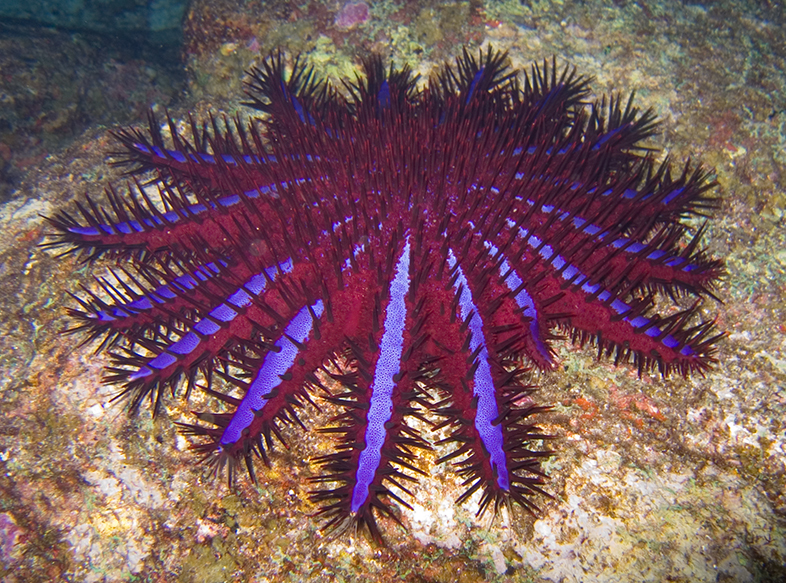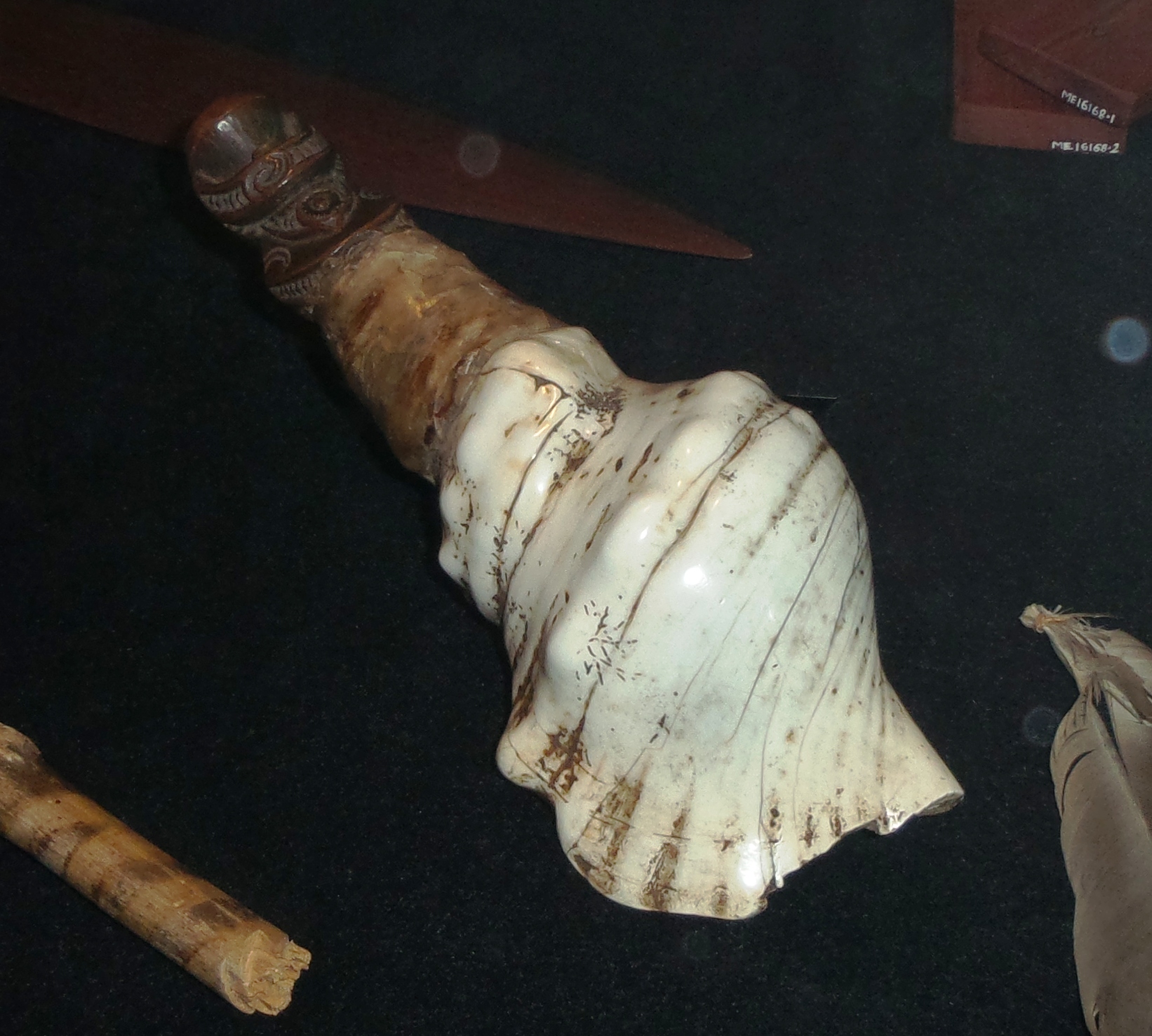|
Charonia Tritonis
''Charonia tritonis'', common name the Triton's trumpet or the giant triton, is a species of very large sea snail, a marine gastropod mollusc in the family Charoniidae, the tritons. Reaching up to two feet (or 60 cm) in shell length this is one of the biggest mollusks in the coral reef. Distribution This species is found throughout the Indo-Pacific Oceans, Red Sea included. Description Feeding habits ''C. tritonis'' is one of the few animals to feed on the crown-of-thorns starfish, ''Acanthaster planci''. Occasional plagues of this large and destructive starfish have killed extensive areas of coral on the Great Barrier Reef of Australia and the western Pacific reefs. The triton has been described as tearing the starfish to pieces with its file-like radula. Human use The shell is well known as a decorative object, and is sometimes modified for use as a trumpet (such as the Japanese ''horagai'', the Maldivian '' sangu'' or the Māori ''pūtātara''). Much deb ... [...More Info...] [...Related Items...] OR: [Wikipedia] [Google] [Baidu] |
Gastropod Shell
The gastropod shell is part of the body of a Gastropoda, gastropod or snail, a kind of mollusc. The shell is an exoskeleton, which protects from predators, mechanical damage, and dehydration, but also serves for muscle attachment and calcium storage. Some gastropods appear shell-less (slugs) but may have a remnant within the mantle, or in some cases the shell is reduced such that the body cannot be retracted within it (semi-slug). Some snails also possess an operculum that seals the opening of the shell, known as the Aperture (mollusc), aperture, which provides further protection. The study of mollusc shells is known as conchology. The biological study of gastropods, and other molluscs in general, is malacology. Shell morphology terms vary by species group. Shell layers The gastropod shell has three major layers secreted by the Mantle (mollusc), mantle. The calcareous central layer, tracum, is typically made of calcium carbonate precipitated into an organic matrix known as c ... [...More Info...] [...Related Items...] OR: [Wikipedia] [Google] [Baidu] |
Red Sea
The Red Sea ( ar, البحر الأحمر - بحر القلزم, translit=Modern: al-Baḥr al-ʾAḥmar, Medieval: Baḥr al-Qulzum; or ; Coptic: ⲫⲓⲟⲙ ⲛ̀ϩⲁϩ ''Phiom Enhah'' or ⲫⲓⲟⲙ ⲛ̀ϣⲁⲣⲓ ''Phiom ǹšari''; Tigrinya: ቀይሕ ባሕሪ ''Qeyih Bahri''; ) is a seawater inlet of the Indian Ocean, lying between Africa and Asia. Its connection to the ocean is in the south, through the Bab el Mandeb strait and the Gulf of Aden. To its north lie the Sinai Peninsula, the Gulf of Aqaba, and the Gulf of Suez (leading to the Suez Canal). It is underlain by the Red Sea Rift, which is part of the Great Rift Valley. The Red Sea has a surface area of roughly 438,000 km2 (169,100 mi2), is about 2250 km (1398 mi) long, and — at its widest point — 355 km (220.6 mi) wide. It has an average depth of 490 m (1,608 ft), and in the central ''Suakin Trough'' it reaches its maximum depth of . The Red Sea also has exten ... [...More Info...] [...Related Items...] OR: [Wikipedia] [Google] [Baidu] |
CITES
CITES (shorter name for the Convention on International Trade in Endangered Species of Wild Fauna and Flora, also known as the Washington Convention) is a multilateral treaty to protect endangered plants and animals from the threats of international trade. It was drafted as a result of a resolution adopted in 1963 at a meeting of members of the International Union for Conservation of Nature (IUCN). The convention was opened for signature in 1973 and CITES entered into force on 1 July 1975. Its aim is to ensure that international trade (import/export) in specimens of animals and plants included under CITES, does not threaten the survival of the species in the wild. This is achieved via a system of permits and certificates. CITES affords varying degrees of protection to more than 38,000 species. , Secretary-General of CITES is Ivonne Higuero. Background CITES is one of the largest and oldest conservation and sustainable use agreements in existence. There are three working langu ... [...More Info...] [...Related Items...] OR: [Wikipedia] [Google] [Baidu] |
Crown-of-thorns Starfish
The crown-of-thorns starfish (frequently abbreviated to COTS), ''Acanthaster planci'', is a large starfish that preys upon hard, or stony, coral polyps (Scleractinia). The crown-of-thorns starfish receives its name from venomous thorn-like spines that cover its upper surface, resembling the biblical crown of thorns. It is one of the largest starfish in the world. ''A. planci'' has a very wide Indo-Pacific distribution. It is perhaps most common around Australia, but can occur at tropical and subtropical latitudes from the Red Sea and the East African coast across the Indian Ocean, and across the Pacific Ocean to the west coast of Central America. It occurs where coral reefs or hard coral communities occur in the region. Description The body form of the crown-of-thorns starfish is fundamentally the same as that of a typical starfish, with a central disk and radiating arms. Its special traits, however, include being disc-shaped, multiple-armed, flexible, prehensile, and heavily ... [...More Info...] [...Related Items...] OR: [Wikipedia] [Google] [Baidu] |
Pūtātara
The pūtātara is a type of trumpet used by the Māori people of New Zealand. It is customarily made with a carved wooden mouthpiece and a bell made from New Zealand's small native conch shells (''Charonia lampas rubicunda'') or Triton (gastropod), triton shell (''Charonia tritonis''). Larger pūtātara were particularly prized as the triton shell was rarely found and only sometimes washed up on the beaches in the Far North. References External linksPūtātara in the collection of the Museum of New Zealand Te Papa Tongarewa Māori musical instruments Brass instruments Trumpets {{maori-stub ... [...More Info...] [...Related Items...] OR: [Wikipedia] [Google] [Baidu] |
Sangu (trumpet) , samurai armour
{{Disambiguation, geo ...
Sangu may refer to: * Sangu language (Gabon) * Sangu language (Tanzania) * Sanghu, Taplejung, Nepal * Sangu River, Bangladesh * Sangu (armour) ''Sangu'' is the term for the three armour components that protected the extremities of the samurai class of feudal Japan. Description Traditional Japanese armour had six main components (''hei-no-rokugu, roku gu, or roku gusoku''), the dou or d� ... [...More Info...] [...Related Items...] OR: [Wikipedia] [Google] [Baidu] |
Horagai
''Horagai'' () (or ''jinkai'' ) are large conch shells, usually from ''Charonia tritonis'', that have been used as trumpets in Japan for many centuries. The instrument, which has served a number of purposes throughout Japanese history, has been given a number of Japanese names depending on its function. Special schools still teach students to play the traditional music associated with the conch. Instrument Unlike most shell trumpets from other parts of the world which produce only one pitch, the Japanese ''hora'' or ''horagai'' can produce three or five different notes. The different pitches are achieved using a bronze or wooden mouthpiece attached to the apex of the shell's spire. At freezing temperatures (often encountered in the mountainous regions of Japan) the lips may freeze to the metal surface, so wooden or bamboo mouthpieces are used. Historical usage Religion The conch is used by Buddhist monks for religious purposes. Its use goes back at least 1,000 years, and it is ... [...More Info...] [...Related Items...] OR: [Wikipedia] [Google] [Baidu] |
Radula
The radula (, ; plural radulae or radulas) is an anatomical structure used by molluscs for feeding, sometimes compared to a tongue. It is a minutely toothed, chitinous ribbon, which is typically used for scraping or cutting food before the food enters the esophagus. The radula is unique to the molluscs, and is found in every class of mollusc except the bivalves, which instead use cilia, waving filaments that bring minute organisms to the mouth. Within the gastropods, the radula is used in feeding by both herbivorous and carnivorous snails and slugs. The arrangement of teeth ( denticles) on the radular ribbon varies considerably from one group to another. In most of the more ancient lineages of gastropods, the radula is used to graze, by scraping diatoms and other microscopic algae off rock surfaces and other substrates. Predatory marine snails such as the Naticidae use the radula plus an acidic secretion to bore through the shell of other molluscs. Other predatory marine snails ... [...More Info...] [...Related Items...] OR: [Wikipedia] [Google] [Baidu] |
Great Barrier Reef
The Great Barrier Reef is the world's largest coral reef system composed of over 2,900 individual reefs and 900 islands stretching for over over an area of approximately . The reef is located in the Coral Sea, off the coast of Queensland, Australia, separated from the coast by a channel 100 miles wide in places and over 200 feet deep. The Great Barrier Reef can be seen from outer space and is the world's biggest single structure made by living organisms. This reef structure is composed of and built by billions of tiny organisms, known as coral polyps. It supports a wide diversity of life and was selected as a World Heritage Site in 1981. CNN labelled it one of the seven natural wonders of the world in 1997. Australian World Heritage places included it in its list in 2007. The Queensland National Trust named it a state icon of Queensland in 2006. A large part of the reef is protected by the Great Barrier Reef Marine Park, which helps to limit the impact of human use, such a ... [...More Info...] [...Related Items...] OR: [Wikipedia] [Google] [Baidu] |
Acanthaster Planci
The crown-of-thorns starfish (frequently abbreviated to COTS), ''Acanthaster planci'', is a large starfish that preys upon hard, or stony, coral polyps (Scleractinia). The crown-of-thorns starfish receives its name from venomous thorn-like spines that cover its upper surface, resembling the biblical crown of thorns. It is one of the largest starfish in the world. ''A. planci'' has a very wide Indo-Pacific distribution. It is perhaps most common around Australia, but can occur at tropical and subtropical latitudes from the Red Sea and the East African coast across the Indian Ocean, and across the Pacific Ocean to the west coast of Central America. It occurs where coral reefs or hard coral communities occur in the region. Description The body form of the crown-of-thorns starfish is fundamentally the same as that of a typical starfish, with a central disk and radiating arms. Its special traits, however, include being disc-shaped, multiple-armed, flexible, prehensile, and heavily sp ... [...More Info...] [...Related Items...] OR: [Wikipedia] [Google] [Baidu] |
An Artificial Rightwards Triton Conch
An, AN, aN, or an may refer to: Businesses and organizations * Airlinair (IATA airline code AN) * Alleanza Nazionale, a former political party in Italy * AnimeNEXT, an annual anime convention located in New Jersey * Anime North, a Canadian anime convention * Ansett Australia, a major Australian airline group that is now defunct (IATA designator AN) * Apalachicola Northern Railroad (reporting mark AN) 1903–2002 ** AN Railway, a successor company, 2002– * Aryan Nations, a white supremacist religious organization * Australian National Railways Commission, an Australian rail operator from 1975 until 1987 * Antonov, a Ukrainian (formerly Soviet) aircraft manufacturing and services company, as a model prefix Entertainment and media * Antv, an Indonesian television network * '' Astronomische Nachrichten'', or ''Astronomical Notes'', an international astronomy journal * ''Avisa Nordland'', a Norwegian newspaper * ''Sweet Bean'' (あん), a 2015 Japanese film also known as ''An' ... [...More Info...] [...Related Items...] OR: [Wikipedia] [Google] [Baidu] |





